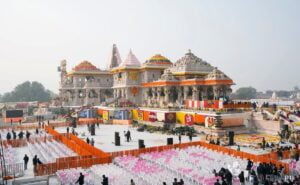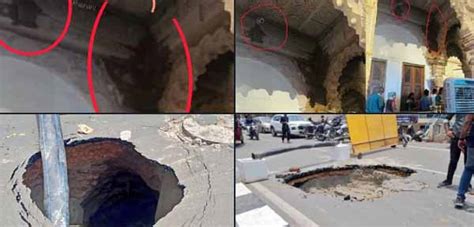ButSpeak.com
News which Matters.

Six months after its grand opening, Ayodhya’s Ram Temple faces infrastructure challenges as heavy rains cause waterlogging issues. Get the latest updates on repairs, official responses, and public reactions.
Six months after the grand inauguration of the Ram Temple in Ayodhya, the temple town is grappling with infrastructure challenges exacerbated by heavy seasonal rains. The recently constructed Ram Path road, crucial for devotees visiting the temple, has suffered multiple cave-ins along its 14-kilometer stretch, prompting swift repairs to minimize inconvenience.

Authorities, responding to concerns over the road’s condition, have taken action by suspending six civic officials for what has been labeled as “gross negligence” in maintaining the infrastructure. Ayodhya’s mayor, Girish Pati Tripathi, assured that efforts to drain rainwater from affected areas were promptly initiated upon receiving reports of waterlogging.
In addition to road issues, reports of leakage within the Ram Temple complex have surfaced following the recent downpours. The Chief Priest initially raised concerns about rainwater seeping into the temple, specifically mentioning leakage from the roof accumulating inside the premises. However, Champat Rai, General Secretary of the Temple Trust, refuted these claims, asserting that no water had entered the Sanctum Sanctorum (‘Garbha Griha’) and that proper drainage arrangements were in place.
According to Mr. Rai, the perceived leakage was traced to a conduit pipe connected to ongoing construction work on the temple’s first floor. Nripendra Misra, chairman of the Ram Temple Construction Committee, supported this explanation, noting that the current construction phase left parts of the temple exposed to the elements, though measures were in place to prevent water ingress into sensitive areas.
Despite these assurances, opposition leaders have seized upon the situation, accusing the BJP-led government of corruption in the construction of the Ram Temple. UP Congress President Ajay Rai criticized the administration, alleging mismanagement and financial irregularities even in matters concerning places of worship.
The Ram Temple in Ayodhya holds immense cultural and religious significance as the birthplace of Lord Ram, revered by millions of Hindus worldwide. Inaugurated on January 22 by Prime Minister Narendra Modi, the temple continues to draw pilgrims and tourists alike, underscoring the need for robust infrastructure to support its status as a major religious site.
As developments unfold, the challenges facing Ayodhya’s Ram Temple highlight the delicate balance between heritage preservation, modern construction practices, and the expectations of millions of devotees who look to this sacred site for spiritual fulfillment and cultural identity.